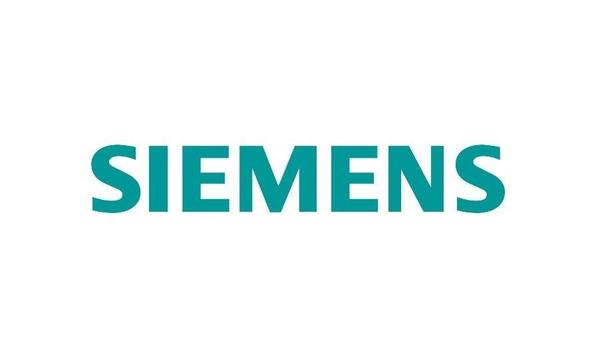As summer approaches we start to think about sun protection for the skin and overall health.
However, for those outside workers who are exposed to solar radiation day in and day out, there continues to be little awareness about the risk that they are being subjected to.
skin cancer
Studies over recent years such as that carried out by Imperial College London demonstrate that working in the sun could lead to one skin cancer death a week and five new cases of melanoma skin cancer with the highest incidences occurring in construction workers than those who work in agriculture, the public sector, and leisure/sport-based employment.
In this article, CIC examines the current threat of this invisible and often overlooked health risk and looks at what businesses can do to help mitigate and control work-related exposure, with the help of independent professionals such as those at the IOM.
the current threat of UV exposure
On average 16,744 cases of melanoma skin cancer every year in the UK resulting in approximately 2,341 deaths
Skin cancer is the most common cancer in the country and since the 1990s incident rates have more than doubled with it now affecting 1 in 36 males and 1 in 47 females. Recent Statistics from Cancer Research UK show there are on average 16,744 cases of melanoma skin cancer every year in the UK resulting in approximately 2,341 deaths.
While the risk factor may seem greater in hotter southern countries, in northern Europe the intensity of the radiation and resultant exposure can be high enough to lead to skin cancer with the sun strong enough to cause sunburn from mid-March to mid-October.
Complacent workplace culture
Despite this, many workers due to non-optimal working, safety practices, or complacent workplace culture remain unaware or underestimate the risk to their health of this disease which is preventable in 90% of cases.
They may not seek enough shade, wear little or no sunscreen, choose short-sleeved garments rather than long, or not wear a hat, however, that can be down to practicalities. Research studies also point to two-thirds of UK adults feeling that a suntan makes them look healthier or more attractive, along with the long-standing evidence that some exposure is necessary to ensure Vitamin D sufficiency and protect against Osteoporosis.
What is the existing UK legislation?
There is no specific legislation relating to minimizing an employee’s risk of UV exposure in the UK or elsewhere in the world currently, although The Health and Safety at Work Act states that in line with their overall responsibility and duty of care, every employer must ensure the health of their workforce.
The Management of Health and Work Regulations also require employers to conduct a suitable risk assessment of the risks to the health of their workforce. That includes the risks from UV radiation. Alongside this, the Health and Safety Executive publishes guidelines around protection. It is of course however left to the discretion of the employer or employee to take the necessary action.
What does the science show?
CIC can surmise that on an average working day, a construction worker is exposed to roughly 1-3 SEDs
The International Agency for Research on Cancer has classified solar radiation and UVA, UVB, and UVC as carcinogenic to humans and predicts that from 2020 to 2040 the number of new cases of Cutaneous Melanoma will increase by more than 50% to over 500,000 cases a year.
While there is limited data to show the effects of ongoing occupational UV exposure to outdoor workers specifically, what CIC can surmise is that on an average working day, a construction worker is exposed to roughly 1-3 SEDs (Standard Erythema Doses).
Risk of skin cancer
If the worker doesn't take proper precautions and actively seeks the sun this can put them at the top end (3 SEDs). Putting them at a significantly increased risk of skin cancer.
The research carried out by IOM scientists and other professionals shows that if the workers were exposed to 2 SEDs or higher over approx. 140 days per year then the risk of skin cancer would double over 28 years.
How can employers mitigate the threat?
Eliminating or substituting the risk of UV exposure may seem a challenge for those individuals who work outdoors and their employers, however simple precautions and improved workplace culture can help to control the risk of exposure to as low a level as possible.
Independent consultants including those at the IOM have extensive practical and research knowledge in the area and can guide employers to proactively manage the threat by assessing the current risk and offering effective control measures alongside sustained education and healthcare promotion initiatives.
Risk Assessment
Using a combination of in-person observation, questionnaires, and real-time exposure technology including wearable solar measuring devices mounted to hard hats, companies can assess the risk to individual health of workplace tasks and ensure that any personal or company-wide controls are effective.
Effective Control Measures
From the assessment, employers can in partnership with an occupational hygienist, introduce a range of sustained controls:
- Give workers access to tailored SMS messages, or a UV forecast app such as that delivered by IOM and Heriot-Watt University which displays UV values for each day and provides FAQs, and information on sun-safe actions to take both in the summer to prevent skin cancer, and winter to ensure adequate Vitamin D.
- Where applicable provide indoor or shaded areas during staff breaks.
- Introduce a rota to reduce workers' time spent out during the hottest parts of the day (11 am till 3.00 pm).
- Add UV protective tints or laminated films to vehicle windows.
Personal protective equipment
Advise workers on the adoption of appropriate PPE:
- Wear long-sleeved loose-fitting tops, trousers, and wide-brim hats where practical, and legionnaire-style flaps on safety helmets.
- Have access to and correctly apply sunscreen with an SPF of at least 30, not just to the face but also to the hands and lips.
- Wear UV filtering safety goggles and 100% UV protection sunglasses that provide side protection and that are labeled as UV400 with CE and British Standard marks.
How can workers protect themselves?
When it comes to reducing UV exposure much of the prevention is down to workers adapting personal behaviors, as well as operating within a workplace culture with a risk-based approach.
They should look to:
- Use toolbox meetings/talks to raise any concerns.
- Correctly follow best practice advice and guidelines.
- Understand and follow instructions related to control measures and PPE.
- Be aware of how best to protect themselves and their skin type.
- Regularly check their skin for moles and changes.
As global temperatures continue to rise along with the threat of skin cancers, and more industry-wide awareness campaigns are launched is the time for employers and workers to wake up to the threat, take proactive and preventative action, and get the guidance and assistance that is out there to address the risk head-on.















